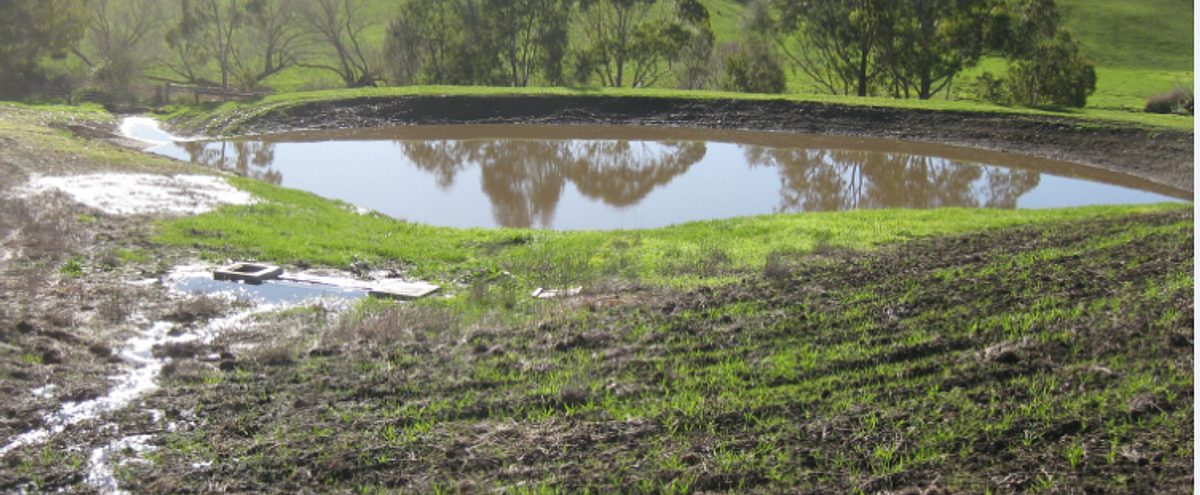
Water affecting activities
Do you need to enlarge, remove or build a dam, pipe a watercourse or construct a water crossing point? These works are considered to be water affecting activities and may require a permit.
What are water affecting activities (WAA)?
Water affecting activities are works that could potentially have adverse impacts on the health and condition of water resources, ecosystems and other water users.
Water resources in the Murraylands and Riverland landscape management region are precious and need to be managed sustainably. This includes our watercourses, lakes, dams, floodplains, groundwater, springs, wetlands, waterholes and catchment landscapes.
Do I need a permit to undertake a water affecting activity?
The Landscape South Australia Act 2019 outlines the water affecting activities that may require a permit. These include, but are not limited to the following:
Surface water and watercourse water
| Activities |
|---|
| The construction, enlargement or removal of dams or structures to collect or divert water. |
| Building structures, or obstructing, or depositing solid materials in a watercourse, lake or floodplain (e.g. depositing material for erosion control or construction of water crossings) |
| Excavating material from a watercourse, lake or floodplain (e.g. excavating or cleaning soaks, waterholes and on-stream dams) |
| Destroying vegetation in a watercourse, lake or floodplain (e.g. removal of reeds) |
| Draining or discharging water or brine into a watercourse or lake (e.g. desalination waste, stormwater including urban discharge, drainage and salinity control) |
| Landholders, property managers, local government, industry and organisations must lodge permit applications for the above mentioned activities with the Murraylands and Riverland Landscape Board. |
Groundwater, imported water and recycled water
Landholders, property managers, local government, industry and organisations must lodge permit applications for these activities with the Department for Environment and Water.
| Activities |
|---|
| Landholders, property managers, local government, industry and organisations must lodge permit applications for these activities with the Department for Environment and Water. |
| drilling, deepening and backfilling wells, bores and groundwater access trenches |
| the use of effluent or imported water for commercial activities (e.g. irrigation) |
| draining or discharging water into a well |
Duty of care
In South Australia, everyone has a general statutory duty of care to act reasonably and responsibly in relation to landscape management. This includes an obligation to maintain and not damage a watercourse, floodplain or lake.
Permit application process
The exact time taken to process the application depends on the nature of the activity, the time of year and the information provided in the proposal, you need to apply for your permit at least two months in advance of scheduled construction works.
Permits are usually valid for one year from date of issue.

Step 1: Permit application form
Download a permit application form or contact the Water Planning and Assessment Officer.
Water affecting activity permit application form - water storage and other diversion
Water affecting activity permit application form - other works
Step 2: Complete your application
Provide information about the proposed activity in accordance with the insect.
Clear and detailed information helps us to assess your application as soon as possible.
Applications should include:
- a site plan
- any other plans, photographs and detailed drawings of the proposed activity
- consultant or engineering reports (where applicable)
- supporting information as required under the water affecting activities control policy or relevant water allocation plan
Step 3: Lodge your application
Permit applications, accompanied by the prescribed fee, must be lodged with the landscape board. Information about the fee and lodging instructions are included on the application form.
Step 4: provide additional information
When you apply for a permit you may be requested to provide additional information in writing. The timeframe to assess the application and make a decision may be extended to take account of any delays in obtaining additional information.
Step 5: Site assessment
A representative of the landscape board may visit your property to assess the application and identify any possible impacts that may result from the proposed activity.
Step 6: Permit notification and conditions
The landscape board will notify you of the decision in writing. You may be required to undertake additional actions in accordance with the conditions of an approved permit. If your permit application is not approved, or you disagree with any of the permit conditions, you may appeal to the Environment, Resources and Development Court within 6 weeks of the decision.
Step 7: Site audit
Upon completion of the works, you must fill out and return a water affecting activity completion notice. An officer may conduct a further site visit to ensure permit conditions have been met.
Penalties may apply
Undertaking a water affecting activity without a permit, or in breach of permit conditions, is an offence under the Landscape South Australia Act 2019.
If you are unsure whether the work you propose to do will require a permit, contact the Water Planning and Assessment Officer for advice before conducting any works.
Breaches can result in protection orders or criminal/civil enforcement notices being served by the Murraylands and Riverland Landscape Board or the Department for Environment and Water
Financial penalties or prosecution may also apply.
Note: a permit may not be required if the activity has been authorised under other legislation, for example the Planning, Development and Infrastructure Act 2016, the Environment Protection Act 1993 or the Native Vegetation Act 1991. Please check with the Murraylands and Riverland Landscape Board to confirm.